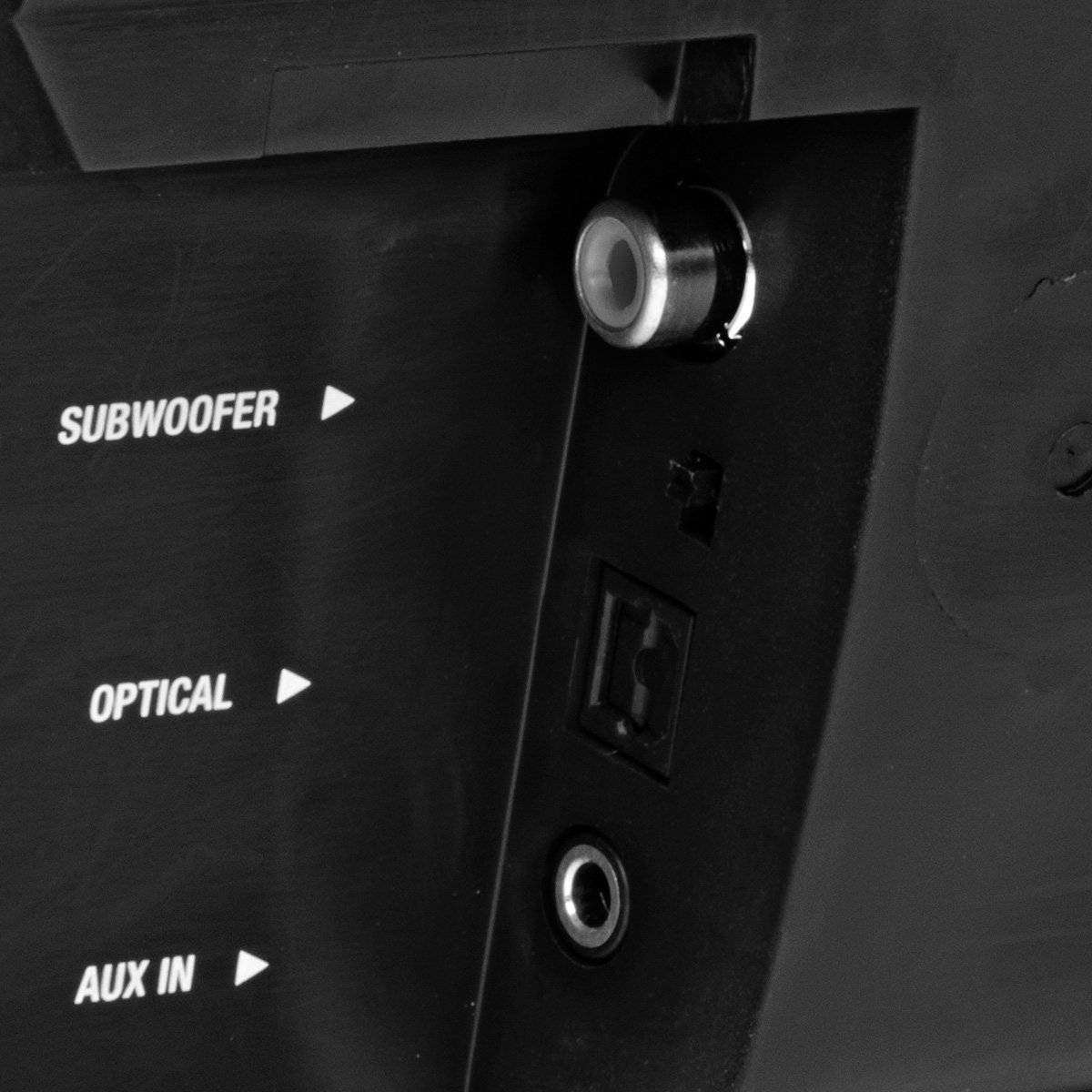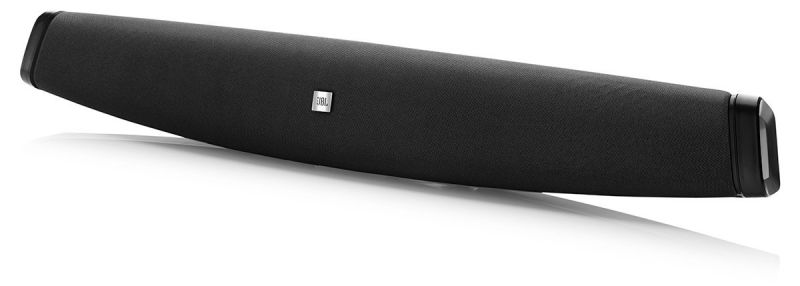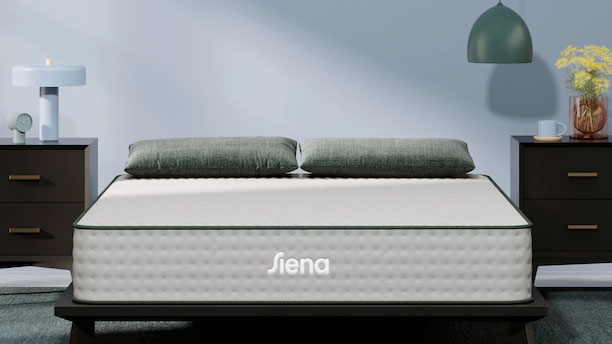Tom's Guide Verdict
JBL's affordable Cinema SB100 delivers enhanced sound with few frills in a simple package.
Pros
- +
Boosts dialogue well
- +
Simple to connect and set up
- +
Inexpensive
Cons
- -
Weak treble tones
- -
No Bluetooth connectivity
Why you can trust Tom's Guide
Many soundbars have expanded beyond their original purpose. Some include Bluetooth connectivity, and others even deliver 5.1 sound — but all those extras cost money. JBL's Cinema SB100 harkens back to the reason soundbars were invented: to improve audio while watching TV and movies, because the built-in speakers on most HDTVs produce sound about as well as a tin can. With few frills, the SB100 delivers improved sound for your TV at a good price — and that's all.
Design
Unlike most blocky soundbars, the SB100 curves out toward the middle, where it widens to accommodate the two 3-inch drivers that produce the midrange and low-end frequencies. The unit also includes two 1.5-inch tweeters for treble tones. At 32 inches long, the SB100 looks best when it's paired with smaller TVs, though even at that size, its 30 watts of power produced enough volume to fill a large room.
The SB100 keeps things simple. It features few inputs, which made it fast and easy to set up. You connect it to your TV by optical digital audio or 3.5mm analog audio. (I used the optical digital connection to my Panasonic ST55P60.) The soundbar doesn't come with a subwoofer, but you can add one to improve the bass, especially during movies. The SB100 also lacks Bluetooth connectivity for music playback, but you could use the analog input to connect to the headphone jack on a mobile device or computer.
MORE: Our Favorite Sound Bar Speakers
JBL took simplicity a bit too far, though — the soundbar lacks visual cues that show you feedback about the functions of the speaker. Buttons for volume, input and surround sound are on top of the SB100, so you can't see them while you're watching TV. The only way I could determine if I had successfully turned on Surround Mode was to walk up to the TV and look at the top of the speaker. The unit also lacks a volume indicator, so I couldn't see how loud the unit was set.

The remote is equally sparse, featuring power, mute and volume buttons, along with a button to switch between the digital optical input and the analog input. In addition, the remote engages the two sound modes the speaker offers: a Surround Mode, which makes audio feel like it's coming from a wider field; and Bass Boost, which increases the low end in the mix. You may not need the remote very often, though; you can program the SB100 to respond to volume and mute commands from your existing TV remote.
Setup and Use
You can set the SB100 on a surface — four rubber feet stabilize it — or mount it to the wall with the included hardware. The soundbar includes a switch to optimize sound based on where you mount it. I placed it on a surface beneath my TV; when I switched the equalizer to Table, the soundbar increased the bass output.

After connecting the soundbar to my TV through the digital optical cable and setting the unit to the appropriate input, I had no problem getting a clear audio signal. I also tested the analog input to play music and tried out the subwoofer; both worked as expected. If you connect a subwoofer, you'll need to control the volume on the subwoofer separately, since the SB100 offers no controls for bass levels.
Audio Performance
The SB100 works best on TV shows and dialogue-heavy movies; those 3-inch midrange drivers improve the clarity and resonance of voices. With Surround Sound and Bass Boost activated, the unit adds depth and width to the overall sound, helping it better fill a room. I found Peter Coyote's narration on Ken Burns' The Roosevelts: An Intimate History much easier to understand with the soundbar on than I did with just the regular TV audio.

But the effect doesn't extend to action movies; The Dark Knight lacked the low-end boom that a system with more fidelity produces, while the eerie sounds of the spiders of Murkwood in The Hobbit: The Desolation of Smaug lost the creepiness that a 5.1 system like the Vizio S4251w-B4 produced. However, when I attached a subwoofer to the system, the additional low-frequency effects greatly improved the experience.

I connected an iPhone 5s to the SB100 through the analog input to test music playback. The SB100 is a serviceable music speaker, though it lacks crisp treble tones. As a result, on Led Zeppelin's "What Is and What Should Never Be," John Bonham's drums lacked punch, though Robert Plant's voice sounded full.
Bottom Line
The SB100 is easy to set up and simple to use, and effectively boosts dialogue to help you better hear movies and TV shows. While it lacks the punch that more expensive systems might provide, it offers an inexpensive way to overcome the weak sound your HDTV emits. You can add a subwoofer to improve the experience, but for the extra money, you can upgrade to a more immersive experience, like the $300 Vizio S4251w-B4.
Follow Michael Gowan @zebgowan. Follow us @tomsguide, on Facebook and on Google+.

Michael Gowan is a freelance technology journalist covering soundbars, TVs, and wireless speakers of all kinds of shapes and sizes for Tom’s Guide. He has written hundreds of product reviews, focusing on sound quality and value to help shoppers make informed buying decisions. Micheal has written about music and consumer technology for more than 25 years. His work has appeared in publications including CNN, Wired, Men’s Journal, PC World and Macworld. When Michael’s not reviewing speakers, he’s probably listening to one anyway.

